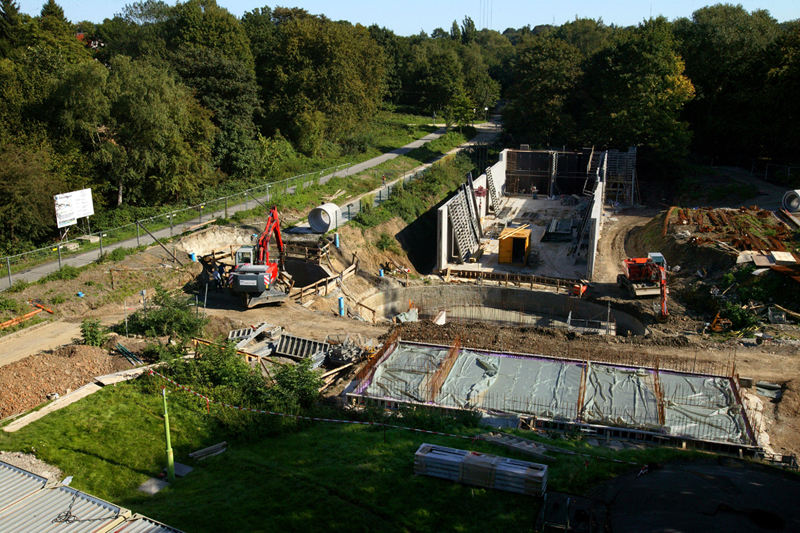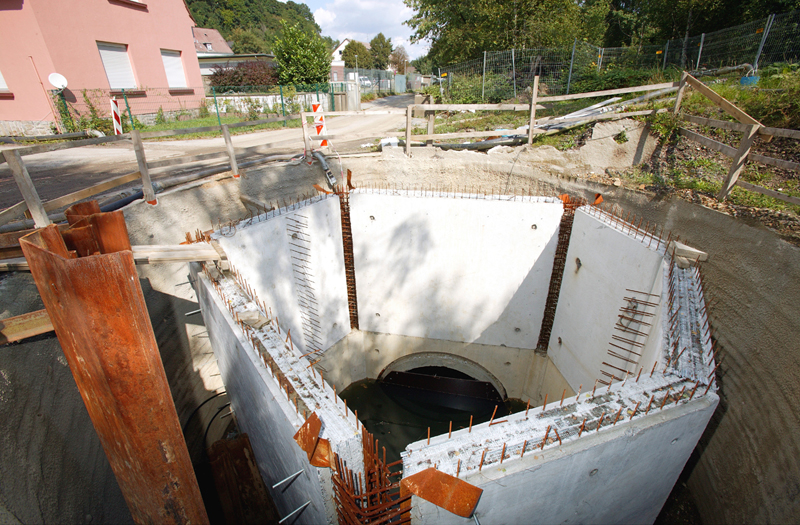Two examples
Storm water overflow tank "Obere Aue", Essen-Heisingen
In order to create the infrastructure necessary for housing development plans in the Essen suburb of Heisingen, local rainwater treatment had to be rehabilitated. On the site of the sewage treatment plant Essen-Heisingen dating from 1957, the storm water overflow tank “Obere Aue” (Upper Meadow) was built, featuring a capacity of 1,400 cubic metres, a combined sewage and storm water pumping station, and around 425 metres of inlet and outlet canals with diameters of up to 2.20 metres, installed up to 9 metres underground. The capital commitment was around 4.5 million Euros.
As a result of this project, six municipal storm water overflows could be closed, considerably reducing emissions. The combined water is now pumped directly to the sewage treatment plant of Essen-Kupferdreh (laid out for 96,000 inhabitants) via the storm water overflow. The old sewage treatment plant of Essen-Heisingen which had only been used for mechanical pre-treatment was dismantled.
Sewage treatment plant Essen-Steele
On the site of the former sewage treatment plant Essen-Steele, comprehensive measures of rainwater treatment had to be taken. However, the required surfaces would only be available after decommissioning and dismantling the old site. In order to avoid interrupting urban development in the catchment area of the sewage treatment plant, it was agreed with the city to proceed in three stages of construction.
First, a sewer with storage capacity and overflow comprising a volume of 1,500 cubic metres was installed just outside the site. The second stage was to build a transfer pump station in 2004, allowing transfer to the sewage treatment plant Essen-Süd of up to 730 litres of combined water per second. After dismantling the old sewage treatment plant, the third stage of construction was to build another sewer with a volume of around 1,500 cubic metres. When adding the buildings and structures the water flows through on its way, these installations amount to a total volume of 3,630 cubic metres.
Construction of the storage sewer started in July 2002. Pipes three metres wide, covering a total length of 216 metres, were driven into the ground in three different directions starting from one central shaft around 10 metres underground. Two additional drift advance routes of 1.2 and 1.4 meters in diameter, including auxiliary buildings, were laid to connect with the sewer system of the Essen utility company.










